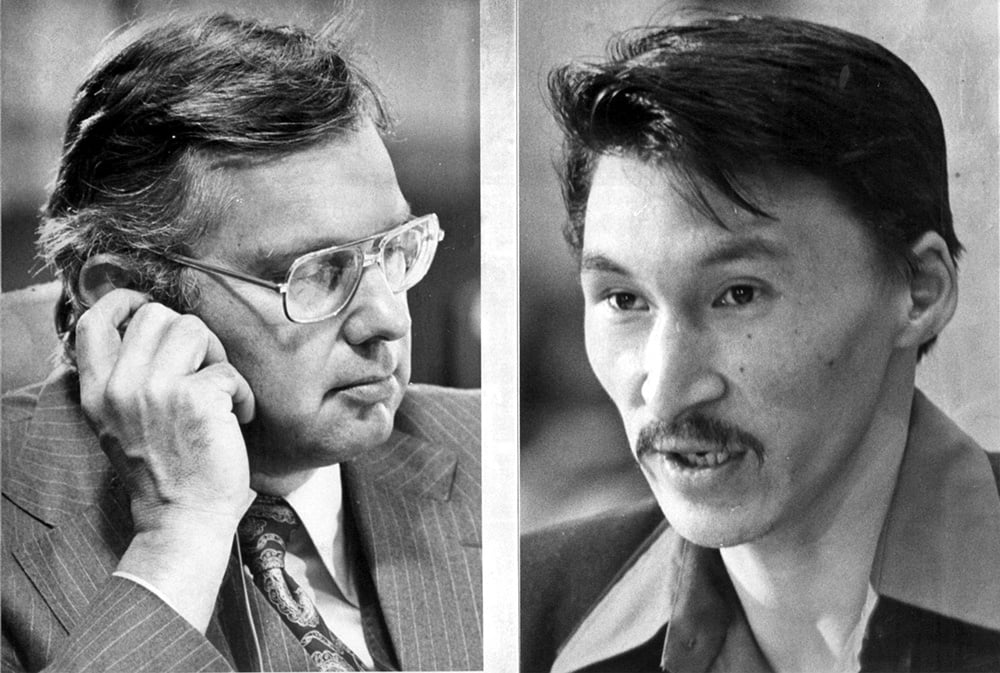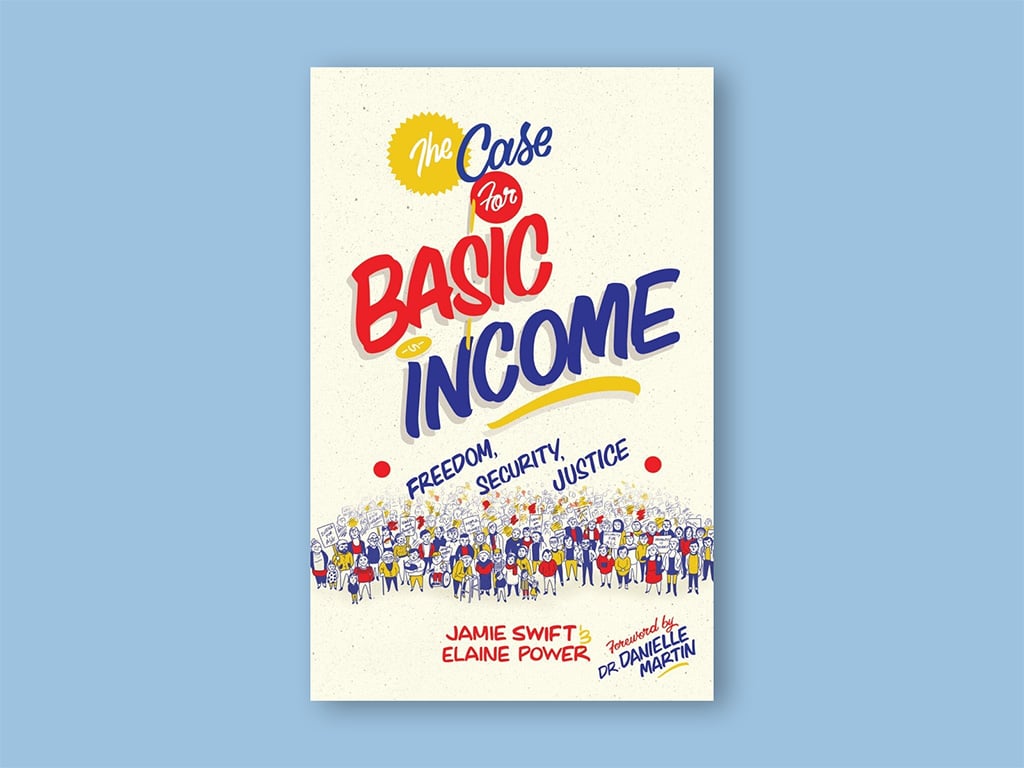The punk rocker’s story feels eerily familiar in a modern era of celebrity culture backlash. Showing at DOXA.
Frederick Blichert 4 May 2021 | TheTyee.ca
Frederick Blichert is a freelance journalist and film critic. His writing appears in Vice, Paste Magazine, Xtra, Motherboard and elsewhere. Reach him here.
Watch the trailer for ‘Poly Styrene: I Am A Cliché’ above.
The ’70s U.K. punk scene isn’t the first thing that comes to mind when you think of the hot button topics of today. But a film screening at this month’s DOXA Documentary Film Festival makes the story of punk icon Poly Styrene feel urgently relevant.
Poly Styrene: I Am a Cliché presents the life and career of Marianne Joan Elliott-Said, who crafted the stage persona Poly Styrene in the 1970s. She is now recognized as the first woman of colour to front a successful rock band in the U.K. — X-Ray Spex.
Known for staging killer shows at the legendary London Roxy punk club and its debut influential single “Oh Bondage Up Yours!,” X-Ray Spex was a huge part of the scene.
The band was overtly political, taking part in the Rock Against Racism movement that saw U.K. punk bands pushing back against the far-right National Front party and a rise in racist violence across the nation.
In 1978, Rock Against Racism aligned itself with the Anti-Nazi League for a carnival and concert in Victoria Park. First up was Poly Styrene with X-Ray Spex, sharing the bill with the Clash and the Buzzcocks. Later concerts would include Stiff Little Fingers, Aswad and Elvis Costello, all part of a growing chorus against hate.
Narrated by Oscar-nominee Ruth Negga reading the words of Poly Styrene, I Am a Cliché explores how the musician rose to fame and faced immense pressures from the press and music industry as an outspoken and in-your-face icon.
This intimate and personal portrait is told not only from the perspective of Poly Styrene’s daughter, co-director Celeste Bell, but also with input from a huge stable of people who knew her both on and off the stage — including her sister Margaret, Thurston Moore of Sonic Youth, fashion designer Vivienne Westwood, Bikini Kill and Le Tigre’s Kathleen Hanna, fellow X-Ray Spex members Paul Dean and Lara Logic, and plenty more.
This access breaks down the image of Poly Styrene to give the audience a more grounded view of a young woman finding her voice.
The ’70s U.K. punk scene isn’t the first thing that comes to mind when you think of the hot button topics of today. But a film screening at this month’s DOXA Documentary Film Festival makes the story of punk icon Poly Styrene feel urgently relevant.
Poly Styrene: I Am a Cliché presents the life and career of Marianne Joan Elliott-Said, who crafted the stage persona Poly Styrene in the 1970s. She is now recognized as the first woman of colour to front a successful rock band in the U.K. — X-Ray Spex.
Known for staging killer shows at the legendary London Roxy punk club and its debut influential single “Oh Bondage Up Yours!,” X-Ray Spex was a huge part of the scene.
The band was overtly political, taking part in the Rock Against Racism movement that saw U.K. punk bands pushing back against the far-right National Front party and a rise in racist violence across the nation.
In 1978, Rock Against Racism aligned itself with the Anti-Nazi League for a carnival and concert in Victoria Park. First up was Poly Styrene with X-Ray Spex, sharing the bill with the Clash and the Buzzcocks. Later concerts would include Stiff Little Fingers, Aswad and Elvis Costello, all part of a growing chorus against hate.
Narrated by Oscar-nominee Ruth Negga reading the words of Poly Styrene, I Am a Cliché explores how the musician rose to fame and faced immense pressures from the press and music industry as an outspoken and in-your-face icon.
This intimate and personal portrait is told not only from the perspective of Poly Styrene’s daughter, co-director Celeste Bell, but also with input from a huge stable of people who knew her both on and off the stage — including her sister Margaret, Thurston Moore of Sonic Youth, fashion designer Vivienne Westwood, Bikini Kill and Le Tigre’s Kathleen Hanna, fellow X-Ray Spex members Paul Dean and Lara Logic, and plenty more.
This access breaks down the image of Poly Styrene to give the audience a more grounded view of a young woman finding her voice.

“I just consider myself as a person first, and anything else or anybody else might call you, well, they’re just names, really, aren’t they? Just given to trends and people and things like that,” says Poly Styrene in a recorded interview.
The erasure of a young woman’s personhood is all too familiar and suddenly urgently relevant as we look back at the life and career of Poly Styrene. The treatment of celebrities has become a hot topic in recent years. Framing Britney Spears — a New York Times doc about the pop music superstar and 2000s tabloid culture — is a recent flashpoint in the ongoing backlash.

We Need a ‘Rock Against Racism’ RevivalREAD MORE
It’s hard to avoid comparisons to Spears while watching I Am a Cliché. Seeing Poly Styrene’s image altered by record label execs, her figure slimmed down for an album cover, and hearing how she struggled with misdiagnosed mental illness all hit close to home.
The parallels reach their peak in scenes when old friends and bandmates describe Poly shaving her head, a now-familiar act of reclamation. After all, if the industry and press want to control your body, what better way to deny them that than to remove one of the symbols of femininity altogether? It’s not much of a stretch to believe a #FreePoly movement might have materialized if this were all happening just a few decades later.
We’re starting, as a society, to come to grips with how we’ve treated pop stars and other female celebrities of the not-so-distant past. But I Am a Cliché lays the truth (and scale) of the problem bare.
We can wring our hands about our complicity in a corporate machine that willfully sacrificed Spears — along with Meghan Markle, Whitney Houston, Megan Fox and so many more — but even the counterculture of punk, so self-satisfied with its emphasis on throwing off the shackles of mainstream tastes and morals, was no different. It casually allowed Poly Styrene to be subjected to the same leering tabloid culture. Her weight, her braces, her race... none of it was off-limits.

DOXA at 20READ MORE
As the doc points out, she amassed a high level of fame without the matching fortune to shield herself from the abuses that came with it. Keenly aware of society’s ugliest corners, Poly Styrene fought on the right side of history and made a name for herself, only to be pushed to the margins.
This is the brilliance of hearing Poly Styrene’s story told by her daughter, someone who knew Marianne Joan Elliott-Said before knowing anything about Poly Styrene. Her famous mom was, like all of us, “a person first,” with admirable qualities, serious flaws and everything in between.
I Am a Cliché pays her the respect of recognizing that personhood in all its complexity and beauty.
‘Poly Styrene: I Am a Cliché’ is available to stream thro Poly Styrene Doc Pays Tribute to the Person Behind the Persona
The punk rocker’s story feels eerily familiar in a modern era of celebrity culture backlash. Showing at DOXA.


















